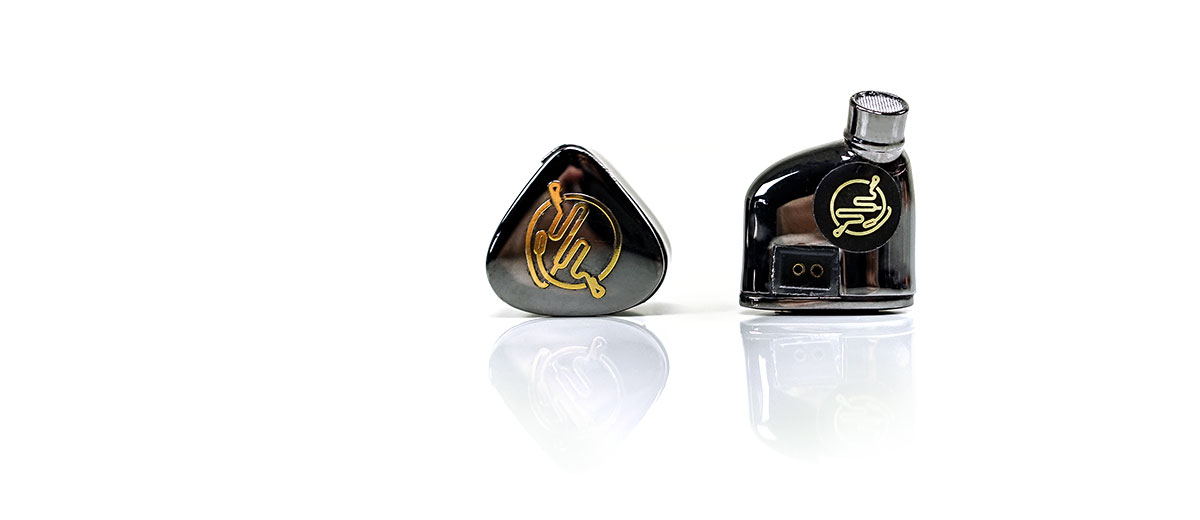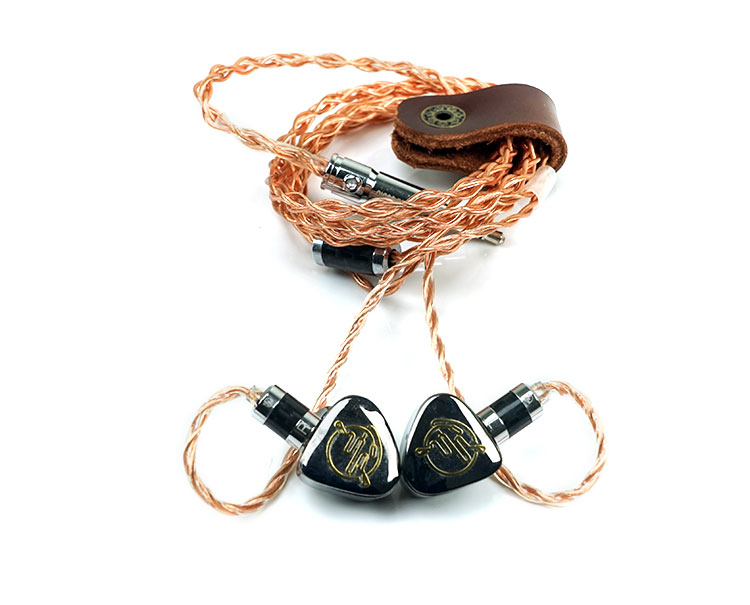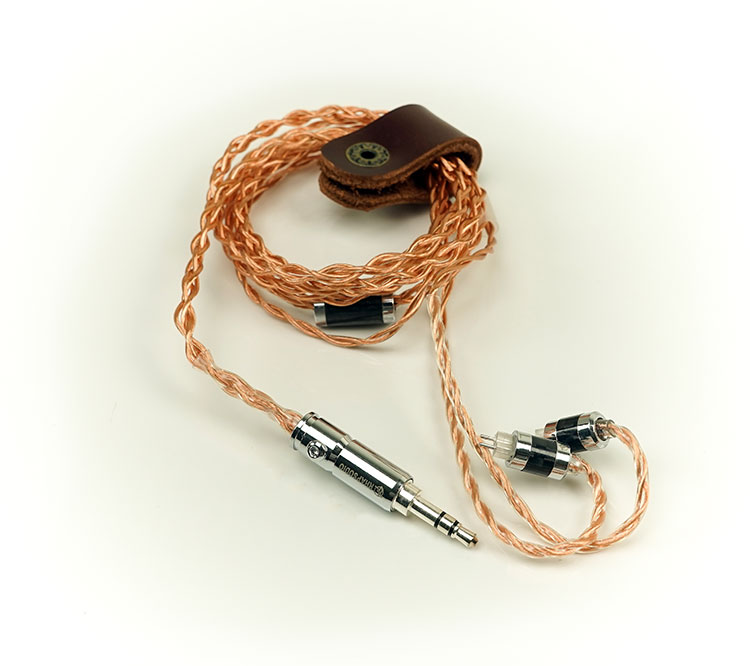The Rhapsodio Galaxy V2 is their second generation 10.3mm titanium diaphragm dynamic driver IEM housed in an attractive brass finish. It retails for $1250.
Disclaimer: The Rhapsodio Galaxy V2 sent to us is a sample in exchange for our honest opinion and does not have to be returned.
We thank the team at Rhapsodio for giving us this opportunity.
Note, this review follows our new scoring guidelines for 2020 which you can read up on here.
To read more on monitors we have reviewed on Headfonics click here.
For our readers not familiar with the Rhapsodio brand this is a boutique IEM manufacturer from Hong Kong founded by Sammy Mak over 5 years ago. The name Rhapsodio is a merger of the two words Rhapsody and Studio. Terms used to describe their house sound as sweet and free-flowing.
Although they do some great cables that have been featured on Headfonics a few years ago their stock in trade is really high-end IEMs. The product price ranges from $300 for their Saturn edition right up to the eye-watering 20-driver Infinity at nearly $2700.
The Galaxy V2 actually sits right in the middle at $1250 though it was originally launched at a slightly higher $1450. It sits right in the middle of the pack and yes, you will have noticed the V2 so it is a next-gen IEM.
Sadly, we never heard the V1, so V1 users can chime in with their thoughts on the two below in the comments section.
Company Pitch
UltraMag Technology
Rhapsodio uses a single dynamic 10.3mm driver with a titanium-coated diaphragm. Titanium drivers are not unique in this business but they are popular given their enhanced rigidity and resulting clarity they can often offer when tuned correctly.
However, the unique selling point of the drivers used by Rhapsodio is more than that with the use of their proprietary UltraMag technology. From what Rhapsodio has informed us, UltraMag technology uses dual magnets to create a much stronger magnetic field on the driver than a regular dynamic driver design.
This, combined with the use of the more rigid titanium-coated diaphragms and a deep chamber, should mean the Galaxy V2 single DD will deliver a superior dynamic range and transient response performance over regular single DD setups.
Positioning
At the new price of $1250, the Galaxy V2 is squaring up directly to the likes of the Campfire Audio Vega. The Galaxy V2, unlike the Vega (now the new Atlas), is not the Rhapsodio flagship. In fact, judging by the product range, it is more or less in the middle of their line-up in terms of pricing.
However, it is their flagship dynamic driver IEM in the range hence it is a fair comparison to the likes of the Vega. I am also told that Sammy is a dynamic driver fan so the Galaxy V2 is pretty much an IEM after his own heart. Not unlike Ken Ball of Campfire Audio who is also a paid-up member of the dynamic driver fan club.
Build Quality
Form Factor
Visually, the Galaxy V2 is an incredibly attractive looking universal IEM. This is a fairly tall 2-piece brass body with a very clean polished finish. It has a mildly reflective property to that polish but it is more of a gunmetal than chrome hue which I personally find to be more subtle than garish.
It is also a fairly hefty IEM, I would say easily over 30g and heavier than the RHA injection-molded T series. Brass is one of the heavier materials to use, certainly heavier than machined aluminum alloys.
The machining on the brass body is very good indeed. All the cornering is very smooth around the base and faceplate with a very even seam just underneath. The plate itself has the Rhapsodio logo adorned front and center and slightly raised in a gold finish.
Nozzle & Stickers
The only faux pas in the design is the branding black sticker towards the base at the top of a very short nozzle. No need for a ticker on a good build quality such as this though I am fairly sure you can peel it off.
The super-short nozzle also means the Galaxy V2 will stick out a bit from the ear and the depth of insertion will on the shallow side. Getting a good seal will rely as much on the tip you use as the individual shape of your ear.
Cable & Connectors
Pandora Dwarf
Some special sauce here with the inclusion of Rhapsodio’s own Pandora Dwarf aftermarket cable as the stock cable for the Galaxy V2. I am very happy that Sammy and the team avoided throwing in a bland Plastics One black twisted OFC cable and opted for something a bit more attractive.
Wire
The Pandora Dwarf cable is a copper Litz (OFC) 4-wire with TPU shielding and what looks to be a translucent PET jacket. The 1.2m cable is terminated with a Rhapsodio branded chrome finished aluminum barrel housing the 3.5mm TRSS jack.
Connectors & Barrels
The cable also sports low-profile ‘Eidolic-style’ y-splitter and 2-pin aluminum barrel connectors with a carbon fiber banding finish. The 2-pin barrels are particularly nice and very durable looking compared to a few another aftermarket thin chrome metal barrels. These do not look short on quality.
Handling
The cable itself is reasonably light with the majority of the additional weight coming from the metal connectors and barrels. I do find the Pandora Dwarf to just be a little noisier than Plussound or EA cables in terms of “microphonics” and it does have a bit more memory retention than the two competitors also. Overall, for a $130 aftermarket copper cable, the build quality is very good.
Comfort & Seal
Because of the bass venting port to the side and the fairly short nozzle on the Galaxy V2 the level of comfort and potential for seal will vary from person to person. A lot will depend on the tip used. Rhapsodio has included two sets of single bore silicone tips with the Galaxy V2. The first is a regular translucent wide bore Spinfit CP500 and the second is a set of wide bore Whirlwind tips with orange stems.
The comfort level for me personally was fine though with some caveats The girth of the Galaxy V2 means you do always feel its presence in your ear and they stick out a little. They are secure but given the tip emphasis for the final seal, I would not be 100% sure they would stay secure with sudden head movement or prolonged energetic movement. In regular couch potato mode they are comfy and I am told a huge step up on the shallower V1.
Tips
With the supplied tips the seal was reasonable and as about as good as you can expect with vented driver shells and silicone tips. Foam tips will isolate a lot better though and generally, they are also physically a little deeper meaning they Galaxy V2 will feel a lot more secure in your ear. The Galaxy V2 will take a T-400 size from Comply. Also, if you are using CA IEMs their foams fit quite nicely also.
Without going into huge detail, I personally did not opt for the foam tips despite the superior seal. The Galaxy V2’s do need a good seal to get the best out of its bass performance but I felt the balance was off with more mids veil and less top end clarity.
The whirlwind tips opened up the presentation a lot more but they toned down the low-end compared to the foams. I tried the Spinfit CP50s here also and they fell in between the foams and whirlwind tips in terms of balance. I got my low-end back and the mids were a lot clearer than the foams though not quite as airy and open sounding as the wide bore whirlwinds.
Accessories & Packaging
The external courier box is nothing to write home about. This is a shiny black lid box with the Rhapsodio logo on the front. Inside, however, is much better with a nice silvery briefcase like container with plenty of contoured foam padding on the inside to hold both the Galaxy V2, cable and its accessories.
Speaking of accessories you get the two sets of silicone single bore tips, the cable itself along with a good quality leather cable organizer strap. The only thing missing would be a small cleaning brush/pick and a smaller pill style zipped carry case since the main box is a bit big for lugging around. At $1250, I also think Rhapsodio should maybe include a small warranty card and serial number if they are using that system in their office.
Click on Page 2 below for Sound Impressions & Comparisons






